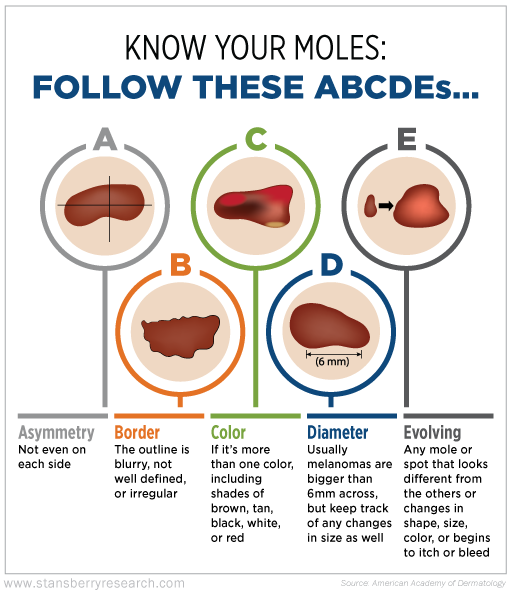Checklists save thousands of lives...
In 2001, an intensive care doctor named Peter Pronovost examined intravenous-line infections in the Intensive Care Unit (ICU) at Johns Hopkins.
In the intensive care unit, doctors and nurses insert intravenous lines inside patients' veins to deliver drugs and monitor blood. The lines often remain in a patient's body for days.
But if certain steps aren't taken, bacteria can crawl down the line and infect the patient. It happens far more than it should – 10%-15% of the time – and it often leads to death.
Pronovost created a simple checklist of the things doctors are supposed to do, including washing hands, using clean gloves and gowns, and so on. After he convinced the hospital to mandate use of the checklist for a year, the rates of infection went from 11% to zero.
Other hospitals followed suit. After Michigan mandated the checklist in its 108 hospitals, infection rates dropped to zero. That's about 4,000 lives saved every year in one state alone.
The Pronovost checklist seems simple... many doctors even scoffed at it... but the results are clear. And there's another checklist that could save your life...
More than 8,500 Americans are diagnosed with skin cancer every day according to the American Academy of Dermatology.
Skin cancer comes in three major types: basal cell carcinoma, squamous cell carcinoma, and melanoma. The first two are "non-melanoma" types and are highly curable. Melanoma, if caught early – before it spreads – has a high survival rate.
However, most folks don't catch it early. That's why about 24 Americans die every day from melanoma.
Recently, we upset a few of our readers who work in the medical field when we advised getting screenings only from dermatologists.
Here's the thing... Several studies found that dermatologists are far more accurate than regular general practitioners (GPs) in diagnosing skin cancer.
One study from the Archives of Dermatology demonstrated that primary care residents failed to diagnose malignant melanomas 40% of the time versus dermatology residents failing 26% of the time.
That isn't to say that general practitioners can't improve their diagnostic skill. One Italian study saw improvements after a four-hour specialized training course for family doctors. The docs correctly identified which lesions should be referred to a dermatologist 73% of the time (up from 55% prior to the training).
Even better, there's a proven seven-point checklist for helping to refer the correct cases for skin cancer. A study from the British Journal of General Practice tested it out and found big improvements in detection and dermatologist referrals. Here's a snapshot:
| Major Features (two points each) |
Minor Features (one point each) |
| 1. Change in size | 4. Size (larger than 6mm*) |
| 2. Irregular color/more than one color | 5. Itch or other sensation |
| 3. Uneven or blurry border | 6. Inflammation |
| 7. "Oozing" of fluid | |
| *Different sources use either 6mm or 7mm. We prefer to err on the side of caution for 6mm, per the American Academy of Dermatology. | |
Doctors assign points for a specific mole or lesion. If the number of points equals or is greater than three, they're encouraged to refer the patient to a specialist.
While this checklist improves referrals, it still isn't 100% accurate. Human error and a lack of training prevent doctors from catching every mole. So we recommend an even better way to monitor your skin...
[optin_form id="73"]
Keep Track of Your Own Moles
Regular check-ups by a dermatologist can be costly, time-consuming, and sometimes lead to overtreatment.
In fact, the U.S. Preventive Services Task Force rate regular skin cancer screenings as "I" for inconclusive... There isn't enough evidence showing that people without symptoms benefit from regular checkups.
Keeping an eye on your own skin helps you know when you need to see a doctor. It's good to have a partner help you.
Start by standing in front of a mirror and checking your front and back entirely. Don't forget elbows, backs of upper arms, and be sure to carefully look at your hands. You can use a hand mirror to get a good look at your back as well, and don't forget to check your buttocks and your genitals.
Sit down and take a good look at your feet. Check between your toes and the soles of your feet.
Finally, you'll want to check your scalp. This is where having a partner can help. Part your hair in sections and check thoroughly with a hand mirror, or ask your partner to look. Don't forget behind your ears and the nape of your neck.
It's much simpler than the seven-point checklist earlier. You just need to remember ABCDE...
If you have a mole (or other spot) that fits one or more of these categories, have a trained dermatologist take a look.
If you aren't sure about size or if it's changing, try using a pencil eraser. A pencil eraser is about 6mm across. Hold it up to the mole in question and see how it measures up. If there's any spot you want to watch, take a photo with the pencil eraser next to it. Then every few months, do it again. If you see any progression, get it checked immediately.
Finally, mark and keep track of moles using this handy sheet from the American Academy of Dermatology.
What We're Reading...
- The story of Pronovost and his breakthrough.
- WebMD presents a guide of the different types of skin cancers.
- Something different: A slot machine casinos can't fix.
Here's to our health, wealth, and a great retirement,
Dr. David Eifrig and the Retirement Millionaire Daily Research Team
Miami, Florida
February 9, 2017

